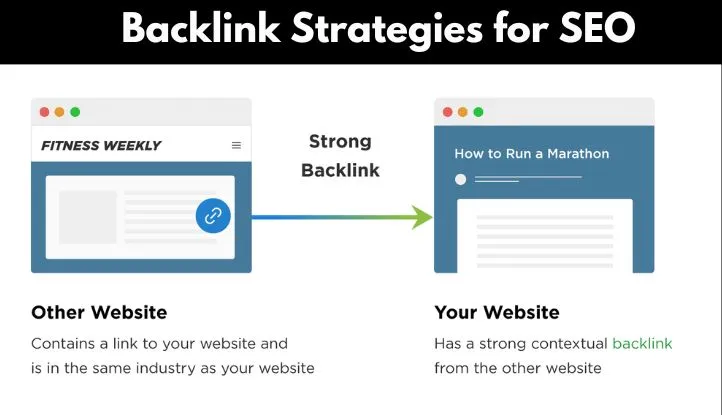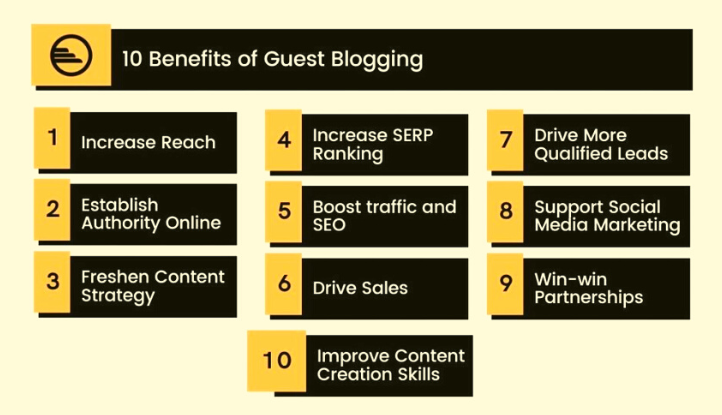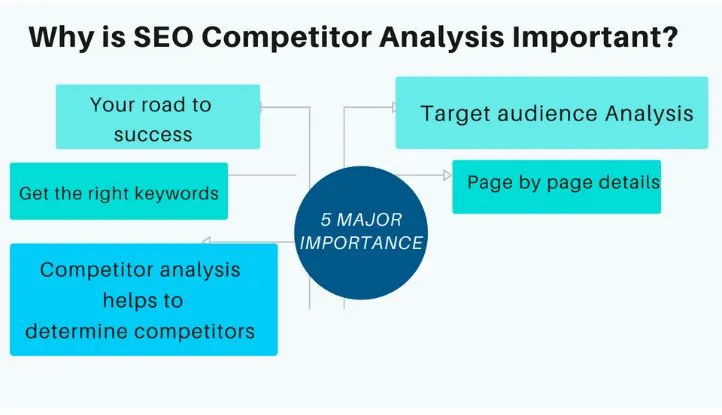7 Backlink Strategies That Increase SEO Optimization

As search engines evolve, backlinks remain a critical factor in determining a website’s authority and ranking in search engine results pages (SERPs). Backlinks are links from external websites that point to your site. They’re an essential part of SEO optimization because they help search engines in understanding the relevance and authority of your site. However, not all backlinks are created equal. In this article, we’ll explore seven backlink strategies that can help you build high-quality, authoritative links that will increase your website’s SEO optimization.
Understanding Backlinks
Before diving into the strategies, it’s essential to understand the two types of backlinks: do-follow and no-follow. Do-follow backlinks pass on link equity and are considered more valuable, while no-follow backlinks do not pass on any link equity. While no-follow links may not provide any direct SEO benefits, they can still drive traffic to your website and increase your brand’s visibility.
Strategy #1: Focus on Quality Content
Creating high-quality content is the foundation successful backlink strategies. By publishing informative and engaging content, you increase the likelihood of other websites linking to your content. When creating content, focus on providing value to your audience and answering their questions. This will not only help you attract more backlinks but also establish your website as an authoritative source of information.
You can follow The Skyscraper Technique, which is a content marketing strategy that involves creating high-quality, comprehensive content that outperforms the existing content on a specific topic. To start, you need to find a piece of content in your niche that is performing well and create a better version of it. When you create your content, make sure to include original research, updated statistics, and valuable insights. Once you have created your content, you can reach out to websites that have linked to the original content and ask them to link to your content instead.
Strategy #2: Build Relationships with Influencers
Building relationships with influencers is a powerful strategy to earn high-quality backlinks. Influencers are either individuals or organizations with a large following and significant influence in a particular industry or niche. Collaborating with influencers can increase brand awareness, boost traffic to your website, and eventually improve your search engine rankings.
In order to build relationships with influencers, start by identifying the influencers in your niche. You can use tools like Buzzsumo or Followerwonk to find influencers based on keywords related to your industry. Once you have identified potential influencers, your next step is to engage with them on social media platforms by commenting on their posts, sharing their content, and mentioning them in your own posts.
Another effective way to build relationships with influencers is by creating valuable content that they can share with their audience. You can write guest posts for their blogs or invite them to collaborate on a piece of content that both you and the influencer can share on your respective platforms. By creating high-quality and value rich to their audience, you can establish a relationship with the influencer and earn backlinks to your website.
Remember that building relationships with influencers is a long-term strategy that requires consistent effort and patience. Be genuine in your interactions, provide value, and focus on building mutually beneficial relationships. Over time, these relationships can help you earn high-quality backlinks and increase your search engine rankings. It can’t be ignored as one of the key backlink strategies over the longer term.
Strategy #3: Guest Blogging
The 3rd strategy in our list of effective backlink strategies is Guest blogging. It is ab effective way to earn backlinks and increase your website’s visibility. By writing high-quality content for other websites in your niche, you can reach a new audience and build relationships and engagements with other bloggers and website owners. When done in the correct way, guest blogging can help you earn authoritative backlinks that can improve your search engine rankings.

How to get started with The Guest Blogging Strategy
To get started with guest blogging, identify the websites that you would like to contribute to. Look for websites that are relevant to your niche and have a strong following. You can use tools like Google search or Alltop to find popular blogs in your industry. Once you have identified potential websites, reach out to the website owners or editors to inquire about guest blogging opportunities.
When writing guest posts, make sure to create high-quality content that provides value to the website’s audience. Avoid using guest post as an opportunity to promote your own website or products. Instead, focus on providing actionable advice or sharing your expertise on a topic related to your niche.
When including links in your guest posts, make sure to follow the website’s guidelines and only include links that are relevant and add value to the content. Avoid using too many links or linking to low-quality websites. By following these guidelines and creating high-quality content, you can build good relationships with other bloggers and earn authoritative backlinks to your website.
Remember that guest blogging is a long-term strategy that requires consistent effort and patience. Don’t expect immediate results or try to use guest blogging as a shortcut to boost your search engine rankings. Instead, focus on building relationships, providing value, and creating high-quality content that can help you earn backlinks and increase your website’s visibility over time.
Strategy #4: Broken Link Building
Broken link building is a strategy that evolves around finding broken links on other websites and replacing them with links to your own content. Broken links are links that no longer work, often because the page they were pointing to has been deleted or moved. By identifying broken links and offering a relevant piece of content to replace them with, you can earn authoritative backlinks and improve your website’s visibility.
Step One
To get started with broken link building, you first need to identify relevant websites in your niche. Look for websites that are relevant to your industry and have a strong online presence. You can use professional tools like Moz, Ahrefs or SEMrush to find websites that have broken links.
Step Two
Once you have identified potential websites, reach out to the website owners or editors and let them know about the broken link. Offer a relevant piece of content from your own website that could replace the broken link. By providing a valuable resource that can fill the gap left by the broken link, you increase your chances of earning a backlink.
When creating content for broken link building, make sure to create high-quality content that provides value to the website’s audience. The content should be relevant to the topic of the broken link and provide useful information or resources. Avoid using the content as an opportunity to promote your own website or products.
Remember that broken link building is a time-consuming process that requires a lot of effort and patience. You may not always get a response from website owners or editors, and even if you do, they may not always agree to replace the broken link with your content. However, by consistently identifying broken links and offering valuable content as a replacement, you can earn authoritative backlinks and improve your website’s visibility over time. Accordingly, it is still considered one of the important backlink strategies for websites and bloggers.
Strategy #5: Competitor Analysis
Competitor analysis is one of the backlink strategies that involves analyzing your competitors’ backlink profiles to identify potential link-building opportunities for your own website. By identifying where your competitors are earning backlinks, you can create a strategy to target those same websites and earn backlinks for your own website.
To get started with competitor analysis, you first need to identify your top competitors in your niche. Use tools like Ahrefs or SEMrush to analyze their backlink profiles and identify the websites that are linking to them. Look for patterns in their backlink profiles, such as the types of websites that are linking to them and the types of content that are earning the most backlinks.
Once you have identified potential link building opportunities, create a strategy to target those same websites and earn backlinks for your own website. Reach out to the website owners or editors and let them know about your content that is relevant to their audience. Offer to provide a guest post, contribute to their resource page, or provide a unique piece of content that could earn a backlink.
When creating content for competitor analysis, make sure to create high-quality content that provides value to the website’s audience. The content should be relevant to the website’s audience and provide useful information or resources. Avoid using the content as an opportunity to promote your own website or products.

Remember that competitor analysis is an ongoing process that requires consistent effort and analysis. Your competitors’ backlink profiles may change over time, and new link-building opportunities may arise. By consistently analyzing your competitors’ backlink profiles and creating a strategy to target those same websites, you can earn authoritative backlinks and improve your website’s visibility over time.
Strategy #6: Internal Linking
Internal linking is a backlink strategy that involves linking to other pages within your website. By linking to relevant pages within your website, you can help search engines to understand how your website is structured and improve your website’s user experience.
To implement the internal linking strategy, you should first create a site structure that is easy to navigate and understand. Make sure to organize your website into categories and subcategories that make sense for your audience. Use descriptive, keyword-rich anchor text when linking to other pages within your website.
When linking to other pages within your website, focus on pages that are relevant to the content you are linking from. For instance, if you are writing a blog post regarding a specific topic, you could create links to other pages or blog posts on your website that provide more information on that topic.
Internal linking can also help distribute link equity within your website. By linking to pages with high authority, you can pass some of that authority to other pages within your website. This can help improve the visibility of those pages in search engine results pages.
Make sure to regularly review your internal linking structure and update it as needed. As your website grows and new pages are added, make sure to link to those pages from relevant content on your website.
Overall, internal linking is a simple but effective strategy for improving your website’s visibility and user experience. By linking to relevant pages within your website and distributing link equity, you can improve your website’s overall authority and help your content rank higher in search engine results pages.
Strategy #7: Testimonials and Reviews
Testimonials and reviews can be one of the powerful backlink strategies for building backlinks and improving your website’s SEO. By providing high-quality products or services and encouraging customers to leave positive reviews, you can attract backlinks and increase your website’s authority.
To started with the testimonials and reviews strategy, make sure you are providing high-quality products or services that are worthy of positive feedback. Encourage customers to leave reviews on your website, social media profiles, and other third-party review sites. You can also reach out to happy customers and check if they are willing to provide a testimonial that you can feature on your website.
When featuring testimonials on your website, make sure to include the customer’s name and a link back to their website or social media profile if possible. This can help attract backlinks and improve your website’s authority.
In addition to featuring testimonials on your website, you can also reach out to bloggers and influencers in your industry and offer them free products or services in exchange for a review. This can help attract backlinks from high-authority websites and improve your website’s overall visibility.
Make sure to monitor your reviews and testimonials regularly and respond to any negative or unpleasent feedback in a professional and helpful manner. This can definately help improve your online reputation and attract more positive reviews in the future.
Overall, testimonials and reviews can be a powerful tool for building backlinks and improving your website’s SEO. By providing high-quality products or services, encouraging customer feedback, and reaching out to influencers in your industry, you can attract backlinks and improve your website’s authority and visibility.
Conclusion
In conclusion, implementing effective backlink strategies can greatly improve your website’s SEO and increase your online visibility. By focusing on building high-quality backlinks through strategies such as guest blogging, broken link building, and building relationships with influencers, you can improve your website’s authority and attract more traffic to your site.
Remember to prioritize quality over quantity when it comes to backlinks, and always focus on providing value to your audience. By following these strategies and consistently working to improve your website’s SEO, you can achieve long-term success and growth for your business.
So, if you haven’t already, start implementing these backlink strategies today and see the difference they can make for your website’s SEO. For more SEO optimization articles, go to our blog through the following link https://contenterp.com/blog/

